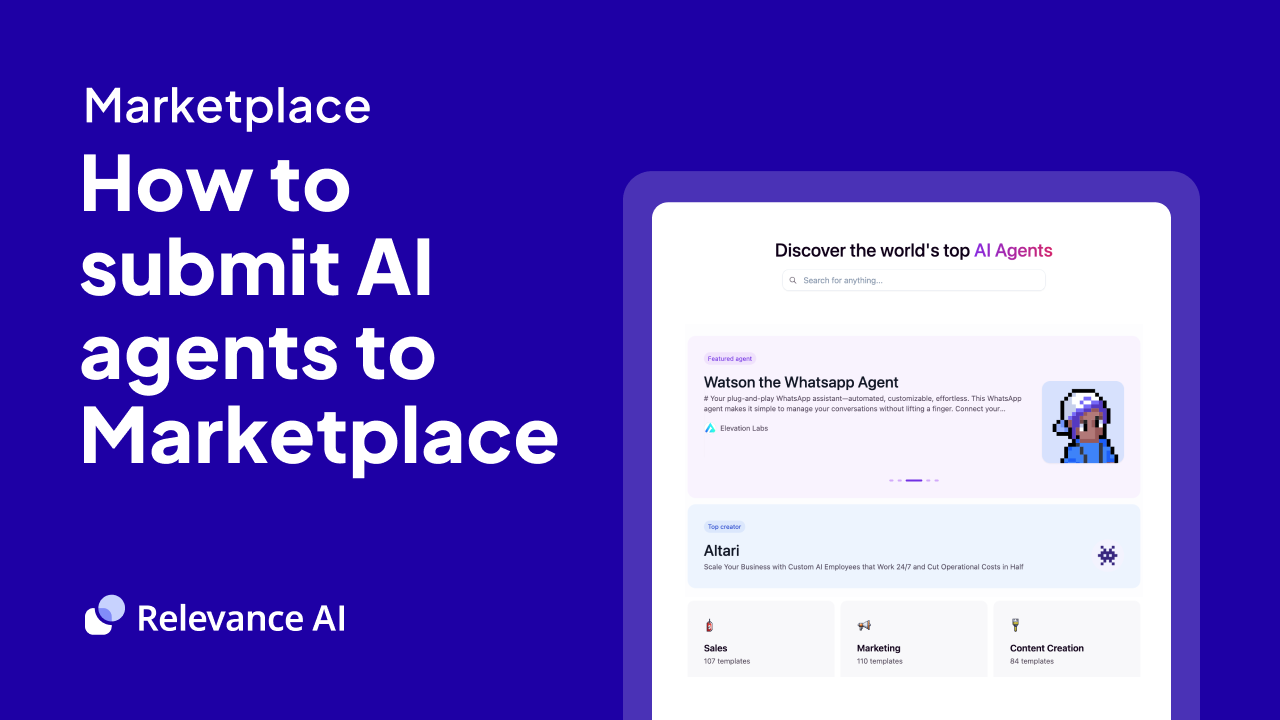Heap
Understanding Heap's Digital Analytics Platform
What is Heap?
Heap stands as a sophisticated digital analytics platform that automatically captures every user interaction on websites and applications without requiring manual tracking implementation. The platform's unique auto-capture technology creates a complete digital record of user behavior, enabling organizations to analyze past interactions and uncover valuable patterns in user engagement.
Key Features of Heap
The platform's core strengths include:
- Automatic event capture across all digital touchpoints
- Retroactive analytics capabilities
- User journey mapping and funnel analysis
- Advanced segmentation tools
- Real-time data processing
- Integration with major business tools

Benefits of AI Agents for Heap
What would have been used before AI Agents?
Product teams traditionally relied on data analysts and engineers to extract meaningful insights from Heap's behavioral analytics. This process involved writing complex SQL queries, creating custom reports, and manually interpreting user behavior patterns. Teams spent countless hours digging through event data, trying to understand user flows and identify friction points in their products.
What are the benefits of AI Agents?
AI Agents transform how teams interact with Heap's vast behavioral data sets. Instead of wrestling with query languages or waiting for analyst support, product managers and marketers can now have natural conversations about their data needs.
The network effects are particularly powerful here - as more teams use AI Agents with Heap, the system builds a deeper understanding of common analytics patterns and user behavior trends. This creates a compounding knowledge advantage that makes insights increasingly accurate and relevant.
Product teams can now:
- Extract precise user journey insights through natural language conversations
- Identify behavioral patterns that indicate user satisfaction or friction
- Generate sophisticated cohort analyses without writing complex queries
- Receive proactive alerts about significant changes in user behavior
The most significant shift is the democratization of product analytics. Teams no longer need specialized technical skills to derive value from their behavioral data. AI Agents serve as an expert analytics partner, making data-driven product decisions accessible across the organization.
This creates a powerful growth loop - faster insights lead to quicker product iterations, which generate more behavioral data for the AI to analyze, ultimately enabling even better product decisions.
Potential Use Cases of AI Agents with Heap
Product Analytics Optimization
Digital teammates integrated with Heap unlock deeper product analytics insights without requiring complex SQL queries or extensive data science knowledge. They analyze user behavior patterns, identify conversion bottlenecks, and surface actionable recommendations to optimize the user journey. The AI agent processes vast amounts of event data to detect anomalies and emerging trends that human analysts might miss.
Automated Insight Generation
AI agents continuously monitor Heap's data streams to generate proactive insights about user engagement, retention metrics, and feature adoption. When unusual patterns emerge, the digital teammate alerts product teams with detailed analysis and suggested next steps. This transforms raw analytics data into strategic product decisions.
Custom Report Creation
Rather than manually configuring complex reports, product teams can request specific analytics views through natural language. The AI agent translates these requests into properly structured Heap queries, creating custom dashboards and visualizations that answer precise business questions. This democratizes access to product data across organizations.
Cohort Analysis
Digital teammates excel at identifying and analyzing distinct user segments based on behavioral patterns. They automatically surface valuable cohorts, like power users or at-risk customers, by processing Heap's comprehensive event data. The AI provides detailed characteristics of each cohort and recommends targeted engagement strategies.
A/B Test Analysis
AI agents enhance A/B testing workflows by automatically analyzing test results, identifying statistically significant differences, and surfacing unexpected insights from the data. They can process multiple test variants simultaneously and provide clear recommendations on which changes drive the strongest user outcomes.
Retention Analysis
Digital teammates continuously monitor user retention patterns across different segments and time periods. They identify factors contributing to both strong retention and churn risk, enabling product teams to take proactive steps to improve user engagement and reduce customer loss.
Feature Impact Assessment
When new features launch, AI agents track their adoption and impact across multiple metrics. They analyze how different user segments interact with new capabilities and measure the broader effects on key performance indicators. This automated analysis helps product teams quickly iterate and optimize feature rollouts.

Industry Use Cases
AI agents integrated with Heap analytics unlock powerful new capabilities for businesses looking to extract deeper meaning from their product data. These digital teammates serve as expert data analysts, working alongside human teams to surface insights that would otherwise remain buried in complex datasets.
The real power comes from combining Heap's robust user behavior tracking with AI that can interpret patterns, anomalies, and opportunities at scale. Product teams at SaaS companies use AI agents to automatically identify friction points in user onboarding flows. Ecommerce brands leverage them to decode purchase patterns and cart abandonment behaviors. B2B organizations tap into AI-powered Heap analysis to understand enterprise customer usage patterns across different user roles and departments.
Rather than replacing human analysts, these AI capabilities amplify what product and analytics teams can accomplish. The AI handles the heavy lifting of processing vast amounts of behavioral data, while humans focus on strategic decisions and creative solutions based on the surfaced insights. This partnership between human expertise and AI analysis represents the future of product analytics.
E-commerce Growth Optimization with Heap AI
E-commerce companies face a constant battle understanding why shoppers abandon carts, which product pages drive conversions, and how to optimize the path to purchase. Traditional analytics require manual tagging and can miss critical user behaviors. This creates major blindspots when trying to improve the shopping experience.
A Heap AI digital teammate transforms this dynamic by automatically capturing every user interaction - from product views to checkout flows - without requiring engineering resources. The AI analyzes these comprehensive behavioral patterns to surface actionable insights about friction points and opportunities.
For example, when an online fashion retailer integrated Heap AI, the system identified that mobile users who viewed size charts had a 47% higher conversion rate. However, only 12% of shoppers were finding the size charts buried in product descriptions. The AI recommended prominently featuring size charts above the fold, leading to a 31% increase in mobile purchases.
The AI also detected that shoppers who used the "similar styles" recommendation feature spent 2.3x more time browsing and had a 58% higher average order value. But the feature was getting minimal visibility. By optimizing the placement and timing of style recommendations, the retailer drove a 24% lift in revenue per session.
Beyond surface-level metrics, Heap AI examines the full context of user journeys - from search patterns to cart modifications to payment flows. This enables it to proactively identify emerging customer needs and friction points before they impact the business. The system becomes an autonomous optimization engine, continuously testing and validating improvements to the shopping experience.
For e-commerce teams looking to drive sustainable growth, a Heap AI digital teammate provides the deep behavioral understanding and proactive optimization capabilities needed to create compelling shopping experiences that convert.
SaaS Product Analytics Mastery Through Heap AI
The SaaS industry operates in a constant state of evolution, where understanding user engagement patterns can mean the difference between product-market fit and market irrelevance. Most product teams rely on incomplete data and lagging indicators to make critical decisions about feature development and user experience.
A Heap AI digital teammate fundamentally transforms product analytics by capturing and analyzing every user interaction across the product surface area. This creates a comprehensive behavioral map that reveals which features drive retention and which ones create confusion.
Take the case of a B2B collaboration platform that deployed Heap AI to decode their user activation challenges. The AI uncovered that teams who completed three specific actions within their first week - creating a shared workspace, inviting colleagues, and setting up custom notifications - had an 82% higher likelihood of becoming long-term customers.
Armed with this insight, the product team redesigned their onboarding flow to naturally guide users toward these key actions. The AI then monitored the impact, detecting that while overall activation improved by 43%, enterprise users still struggled with team invitations due to complex SSO requirements.
The real power emerged when the AI began correlating feature usage patterns with customer feedback and support tickets. It identified that users who engaged with the platform's API documentation within their first month had a 3.5x higher expansion rate. This led to a strategic shift in how the platform surfaced developer resources.
For product leaders seeking to build sticky B2B products, Heap AI serves as a strategic compass - continuously processing millions of user interactions to surface the patterns and opportunities that drive sustainable growth. The system moves beyond vanity metrics to deliver actionable intelligence about what truly matters: creating product experiences that solve real user problems.

Considerations and Challenges
Implementing AI agents for Heap analytics requires careful navigation of both technical complexities and organizational dynamics. The path to successful deployment involves addressing several critical areas that can make or break the integration.
Technical Challenges
Data quality stands as the primary technical hurdle. Heap's event-based tracking system generates massive volumes of user behavior data, which requires sophisticated preprocessing before an AI agent can effectively analyze it. The agent must handle inconsistent data formats, missing values, and complex nested event structures.
API rate limits pose another significant challenge. AI agents need to process real-time data while respecting Heap's API constraints, requiring thoughtful implementation of queuing systems and data batching mechanisms. This balancing act becomes especially crucial during high-traffic periods when analytics demands peak.
Operational Challenges
Team alignment often emerges as a critical obstacle. Analytics teams, product managers, and developers may have different expectations about what the AI agent should deliver. Setting clear boundaries around the agent's capabilities and establishing shared success metrics helps prevent scope creep and misaligned objectives.
Privacy compliance adds another layer of complexity. AI agents processing Heap data must maintain GDPR, CCPA, and other regulatory requirements. This necessitates implementing robust data handling protocols and ensuring the agent's learning models don't inadvertently expose sensitive information.
Integration Considerations
The existing analytics stack significantly impacts implementation success. The AI agent needs to work harmoniously with current business intelligence tools, data warehouses, and reporting systems. This often requires building custom connectors and maintaining data consistency across platforms.
Cost management deserves careful attention. While AI agents can extract valuable insights from Heap data, their computational requirements can lead to unexpected expenses. Implementing usage monitoring and cost controls helps prevent budget overruns while maintaining performance.
AI-Powered Analytics: Transforming Digital Product Development
The marriage of AI Agents and Heap analytics represents a significant evolution in how organizations understand and optimize their digital products. This combination breaks down traditional barriers to data analysis, enabling teams across the organization to extract actionable insights without deep technical expertise. The network effects of this integration create a continuous improvement cycle - as AI Agents process more behavioral data, their insights become increasingly sophisticated, leading to better product decisions and stronger user engagement. Organizations that embrace this technology stack position themselves to build more user-centric products while maintaining a competitive edge in their respective markets.











